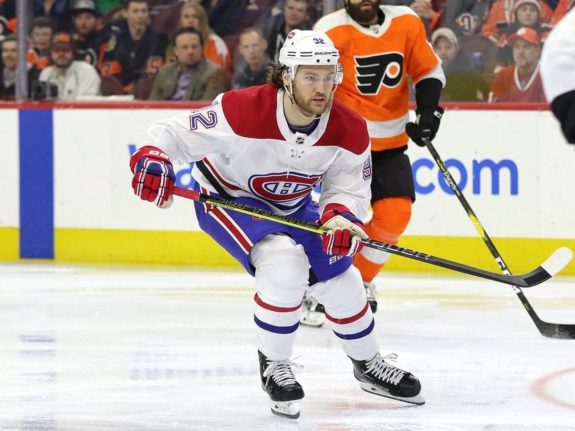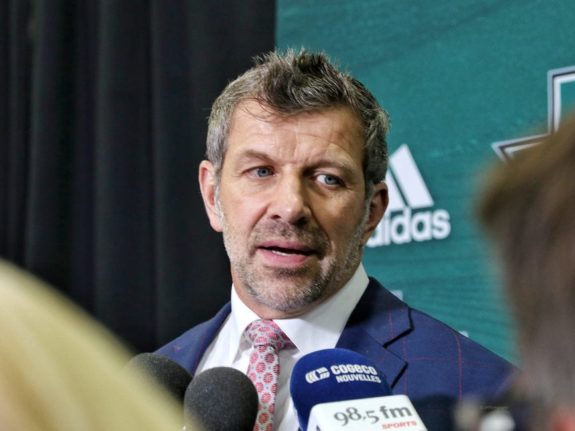The Canadiens are off to one of their hottest starts in recent memory, and it seems like the offseason moves that Marc Bergevin has made are all paying off. There are many reasons why they are having such a good start, but the biggest would be the team’s depth. Each line is contributing, and the team so far is probably the best in the league.
A Look Back at Last Season
Last season the Canadiens finished 24th in the league and only made the playoffs because the NHL allowed 24 teams to participate in them as part of the league’s return to play plan. However, when the 2019-20 season started, the Canadiens were among the top teams in the league over the first 20 games of the season with an 11-5-4 record. The team was on a three-game winning streak when forward Jonathan Drouin got injured in a victory over the Washington Capitals. He was the Canadiens leading scorer with 15 points in 19 games and would be a great loss, but no one would have predicted what happened next.

The Canadiens would lose eight straight games, along with Joel Armia to a long-term injury, plus Brendan Gallagher for 13 games due to injuries. This would reveal the biggest issue the Habs had in their lineup, which was the lack of depth the team needed to continue to win through injuries. They would have more injuries where players would miss ten games or more, such as Shea Weber, Ben Chiarot, Nate Thompson, Tomas Tatar, and Paul Byron. The Canadiens would go on a second eight-game losing streak, which would ultimately seal their fate for the season.
Depth Was a Focus in the Offseason
Every team has injuries, and the Canadiens were not special or different from any other team in that regard. As a matter of fact, they were 11th in man-games lost last season. The difference between the Canadiens man-games lost and the other teams were the players. The Pittsburgh Penguins also had huge injury issues with star players like Sidney Crosby and Evgeni Malkin, but the Penguins’ depth helped them stay afloat and still be in a playoff position when the season went on pause.
Related: Canadiens Must Choose Between Armia and Perry, Right?
The Canadiens injuries had a bigger impact because they didn’t have the players skilled enough to replace the injured ones. In other words, the bottom six didn’t have the skill to move into the top six to keep a balanced scoring pace. With Drouin and Armia injured, they were left with players like Nick Cousins and Jordan Weal to play top-six minutes, which isn’t very sustainable. To fix this, Bergevin would need to fill the top six with more talent to improve the bottom by pushing better players down the lineup.

In the offseason, Bergevin did just that: he acquired Josh Anderson, signed Tyler Toffoli, and then added extra depth signing Michael Frolik and Corey Perry. With the acquisitions of Anderson and Toffoli alone, the Canadiens improved their top six. Subsequently, they improved their bottom six by pushing players like Artturi Lehkonen and Paul Byron to the fourth line. Toffoli and Armia, who last year were second liners, are now playing on the third line, giving the Habs three solid lines.
Canadiens Have a Well-Balanced Lineup
As mentioned in the previous paragraph, Toffoli and Armia are on the third line for the Canadiens. The team has Tatar and Gallagher on the first line, followed by Drouin and Anderson on the second, with Toffoli and Armia on the third. They are centered by Phil Danault, Nick Suzuki and Jesperi Kotkaniemi. On most any other team in the NHL, these would all be solid second lines. With Byron, Jake Evans, and Lehkonen on the fourth line, the Canadiens essentially have four lines of top-nine forwards.

With a well-balanced lineup, head coach Claude Julien can curb the amount of ice time for his players. So far this season, no Canadiens forward has more than 13:11 of ice time at even strength, and the difference between the highest ice time and the lowest amongst the top three lines is only 1:16. The Canadiens are so balanced that there is no real distinction on which line is the first line, and Julien can deploy any line he wants in any situation because of the team’s depth. In a season with a condensed schedule, and a team can play five in a week, the fewer minutes your top lines play, the better it is for the players and team.
Good Depth Equals Good Hockey
Since the Canadiens now have the depth on the roster, their early season success has proven that when you can use three solid lines instead of one, you tend to win more hockey games than you lose. The Habs are off to a hot start, going 5-1-2 and are among the leaders in most offensive categories, with the potential to have up to eight 20 goal scorers in their lineup, giving them the ability to have one on every line. When every line can score goals, it’s harder for the other teams they play to defend their own net.
Related: Canadiens Fans No Longer Divided When it Comes to Bergevin
After eight games, the Canadiens have four players on a point-per-game pace — Toffoli, Drouin, Armia, and Jeff Petry. All but three players have scored at least one goal, and every player who has played at least one game has scored a minimum of two points. The Canadiens have the top line in the league in xGF% with a minimum of 60 minutes played and two lines in the top 10. This is all due to the team’s improved depth, as the player’s minutes are minimized, and the effort is maximized.
Too Much Depth Creates Good Problems
The Canadiens haven’t had many injuries so far this season, and only Armia has been out for any significant amount of time — three games — but he should be back soon. Perry has stepped in and done a terrific job filling in on the third line, getting two points in three games. And he has played so well that when Armia returns, Julien will have an issue deciding who he takes out of the lineup. Armia is a point-per-game player, Perry is playing well and providing a good spark, and the wingers on the fourth line — Byron and Lehkonen — are great at killing penalties.

The Canadiens have played eight games and already have to decide who to sit and who to play. That decision has nothing to do with anyone playing poorly, but all players involved are playing well at their role, including the ones returning from injury. In the end, it will come down to who’s playing better when Armia returns. This isn’t an option the Canadiens had last season; last season, they couldn’t wait for players to return so they can take their replacement out of the lineup. This only shows how deep their depth is when a coach’s biggest worry is who to sit because he doesn’t have enough room to get everyone in.
Right now, the odd man out statistically and based on his play so far would be Byron. He hasn’t helped offensively and isn’t on the top penalty kill anymore. In addition to this, he could be playing with an injured foot that he hurt when a Shea Weber shot went off his skate. This season’s depth is a complete 180 from last season, and it’s so good that Victor Mete is asking for a trade because he can’t get any ice time on defence. The Canadiens have everything going for them so far this season. Now they just have use it to keep winning hockey games.